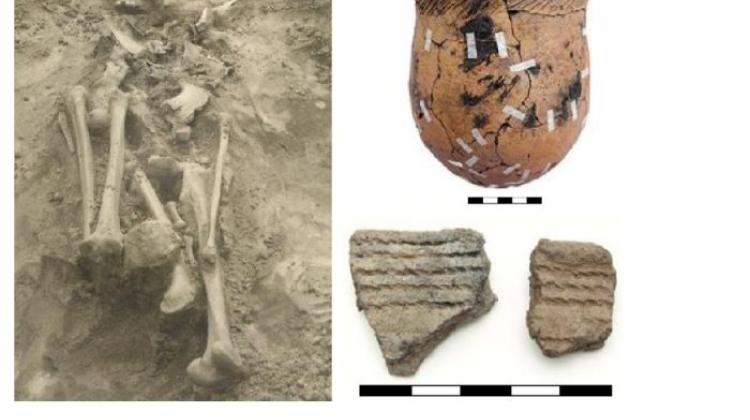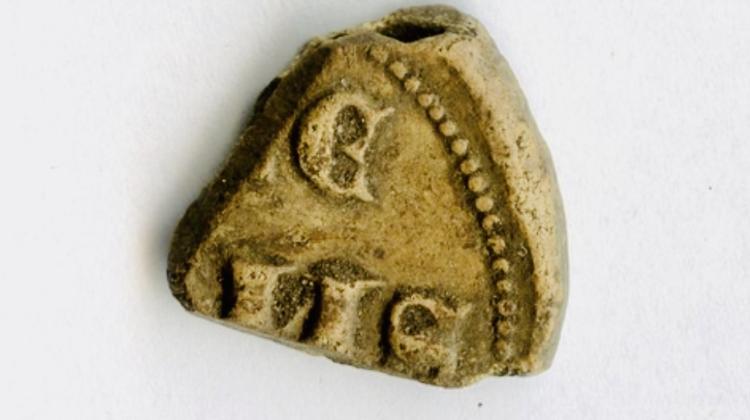Eastern Baltic's first farmers and hunter-gatherers lived together, but apart
 Photo from press release
Photo from press release
It was not in all places where agriculture appeared, that local populations quickly noticed its benefits. In the areas from today's Lithuania to Finland, for about half a millennium, hunter-fishermen-gatherers lived alongside the first farmers, and these worlds merged very slowly, scientists' analyses show.
It may seem that agriculture was such an attractive innovation that whenever it reached new areas, it was enthusiastically welcomed and introduced in place of the previous gathering, fishing and hunting economy. However, new analyses show that it was not so easy everywhere.
In the lands of today's western and southern Poland, agriculture was actually adopted relatively quickly, Dr. Łukasz Pospieszny from the University of Gdańsk says in an interview with PAP. Local populations in the Mesolithic - from the 8th millennium BCE - led a nomadic lifestyle and obtained food by hunting wild animals and fishing, as well as searching for wild edible plants. In the second half of the 6th millennium BCE, however, immigrants associated with the Linear Pottery culture, crossed the Carpathians and Sudetes from the south and arrived here from the south. They brought several groundbreaking ideas with them, including ceramics, animal husbandry and plant cultivation.
The indigenous population adopted these innovations and culture relatively quickly, usually immediately as a package, and moved away from their traditional lifestyle. Only small groups continued the gathering, fishing and hunting traditions. And so, at the end of the 6th millennium BCE, the Linear Pottery culture (the name comes from the characteristically decorated vessels) became common in these lands.
However, the international teams' analyses published in the Royal Society Open Science show that in the areas around the Baltic Sea east of the Vistula - today's Lithuania, Latvia, Estonia and Finland (but also partially in Masuria) - agriculture was adopted at a much, much slower pace, and innovations related to it were adopted at large intervals.
'More and more data indicate that at the same time and in the same areas - on the eastern Baltic Sea - nomadic immigrant shepherd communities lived for hundreds of years in parallel with hunter-fisher-gatherer communities,’ says Dr. Pospieszny who participated in the research project.
New research shows that in the areas on the eastern Baltic Sea, where hunter-fisher-gatherer communities lived, the first important innovation, ceramics, appeared around the 4th millennium BCE. Much later, around 2900-2700 BCE, the first immigrants from the south arrived (genetic research shows that they came from the Black Sea steppes). They were representatives of the Corded Ware culture. They were shepherds, the first animal breeders. They functioned for several hundred years in parallel with communities living according to old customs.
The second millennium BCE, the Bronze Age, marks the first finds related to plant cultivation (including charred cereal grains). It was then that the first large settlement with permanent buildings began to appear. It is therefore clear that over the eastern Baltic Sea, innovations related to the Neolithic revolution were spread over time. First comes ceramics, then farming, and finally plant cultivation and permanent buildings. This process took 2-3 thousand years.
Dr. Pospieszny explains that during the period under study, both hunter-gatherer communities and the first farmers were mobile and often changed their places of residence. 'With a few exceptions, there are no remains of houses or larger settlements from those times,' he points out. Therefore, conclusions can be drawn based on human remains (the isotopic composition of a number of elements allows to determine what dominated in the diet). Objects found in graves can also be analysed (e.g. animal remains placed in the grave as a sacrifice, decorations and tools made of bones). Food residues - fats - in fragments of pottery used for food preparation were also analysed.
These analyses show that the diet of different groups of people who lived in the same areas during the same period differed significantly. The diet of hunter-fisher-gatherers consisted mainly of fish, mussels, wild mammals and plants. The representatives of the Corded Ware culture ate largely the protein of farm animals (it is currently impossible to determine whether it was cattle, goats or sheep).
In addition to their diets, these groups also had different customs. The burials of the first breeders are very characteristic: the bodies are placed on their sides (men - on the right side, women - on the left side). Two ways of eating - and two lifestyles - existed side by side for a long time.
According to research, there were areas in Europe where agriculture was welcomed with open arms and areas where the locals were sceptical about it. 'The border of these worlds runs along the lower section of the Vistula. To the west - there were areas favourable for agriculture, mild climate, good soil, to the east of the Vistula - starting from Masuria - there were dense forests, lakes and areas less favourable for agriculture. There, communities stayed close to rivers, lakes and the sea coast and continued fishing and gathering for a long time, while agriculture had to wait for its time. There was plenty of food, so the benefits of keeping animals and cultivating the land were not immediately noticed. And agriculture is not such an easy way of life', comments the archaeologist.
'What surprised us were the conclusions that people can stick to their lifestyle very consistently and selectively adopt innovations. Communities that differ greatly in terms of lifestyle, diet and economy can function side by side. It seemed to us that it would be similar everywhere - a linear model of the economy: agriculture comes and everyone welcomes it. But it turns out that this is not the case - there are places where people lived very close to each other without adopting new customs,’ says Dr. Pospieszny.
The research was co-financed by a grant from the Polish National Science Centre. (PAP)
PAP - Science in Poland, Ludwika Tomala
lt/ bar/ kap/
tr. RL
Przed dodaniem komentarza prosimy o zapoznanie z Regulaminem forum serwisu Nauka w Polsce.



















